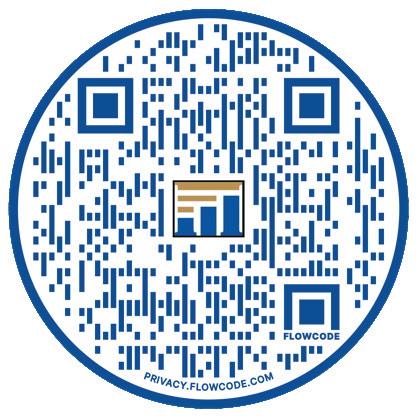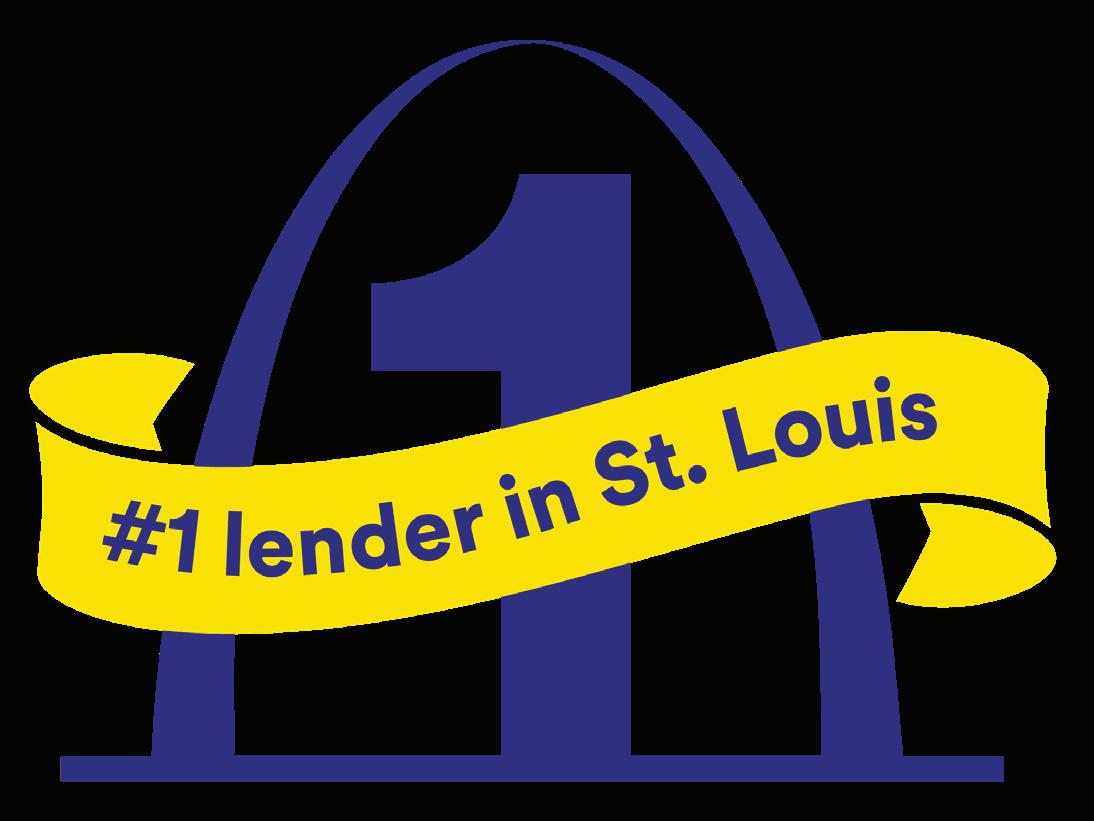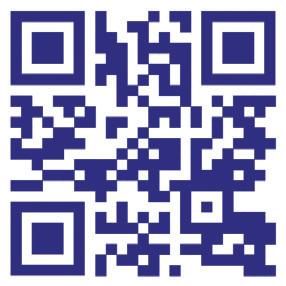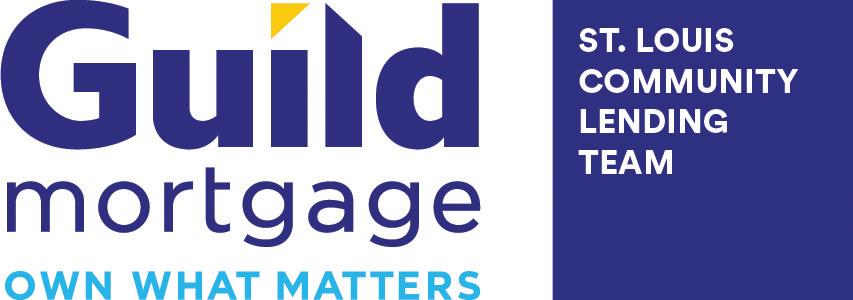




In the vibrant community of St. Louis, Great Southern Bank is dedicated to empowering individuals with the financial knowledge they need to thrive. With 18 local banking centers and a commitment to serving our community, we recognize the importance of education in fostering financial well-being. Our free online Financial Education Center is designed for everyone, offering interactive modules that cover essential financial topics, including debt management, budgeting, and planning for the future.
According to one study, debt management is a critical issue for many individuals, with approximately 80% of Americans currently in debt. This statistic underscores the necessity for financial literacy and support. Whether it’s credit cards, student loans, or mortgages, understanding how debt works can empower individuals to make informed decisions. Debt often carries a negative connotation, but it doesn’t have to be detrimental. Certain types of debt, like loans for education or purchasing a home, are consid-
ered “good debt.” These investments can appreciate over time, potentially increasing your net worth. Conversely, “bad debt,” such as high-interest payday loans or credit card debt, can lead to financial strain if not managed responsibly. However, effective debt management can relieve these burdens, offering a sense of reassurance and hope for a better financial future.
Having a plan to manage debt effectively is essential for achieving financial
stability. Here are two popular strategies:
1. Avalanche Method: This approach focuses on paying off debts with the highest interest rates first while making minimum payments on the rest. This method can save you money on interest over time.
2. Snowball Method: With this strategy, you concentrate on paying off your smallest debts first, gaining momentum and motivation as you eliminate each one. Both methods are effective, and your choice may depend on your financial situation. If you’re struggling to stick to a budget or often rely on credit cards for



“I am given opportunitythe to learn and grow and to help others do the same every day.”
“I love my team and feel the possibilities of growth are endless with First Mid. ”
“Every
I feel
“I feel encouraged to do the best job I am able to do, with the flexibility to let me succeed.”


Pay down credit card and loan debt to save money on interest. This may also lower your debt-to-income ratio and increase your credit score, which helps when applying for a mortgage. Start with accounts with the highest interest rates, pay more than the minimum, make payments every two weeks instead of monthly, and consider setting up automatic payments.
Many African Americans dream of owning a home but aren’t sure whether they have enough money for a down payment. This roadblock plays a role in the housing gap between Black and white Americans.
According to a new report from the National Association of Realtors using Census Bureau data from 2022, the Black homeownership rate saw a modest annual uptick to 44.1% in 2022 from 44% in 2021, but remains significantly behind the White homeownership rate of 72%.
However, prospective homebuyers might already have enough for a downpayment or be closer than they think.
This is down payment and closing cost assistance programs are useful.
Depending on your situation, you may qualify for a grant to help with your housing purchase. Grants can offer down payment and closing cost assistance. Some financing programs also allow qualified homebuyers to put down as little as 3%.
“Aspiring homeowners may want to talk with a mortgage professional to explore their options. They can help aspiring homeowners understand how much they need for a down payment and other upfront costs as well as for ongoing expenses such as insurance, homeowners’ association fees, and unexpected repairs,” says Ewunike N. Brady, head of African American Segment, Wells Fargo Home Lending.
If saving up to buy a home is your goal,
See HOMEOWNERSHIP, D9
Continued from D3
basic expenses, it may be time to seek assistance from a reputable credit counseling agency.
Building a financial foundation
Our Financial Education Center offers resources to help you build a solid financial foundation. Here, you can explore topics like budgeting, saving, and investing. For example, the 50-30-20 rule is a simple budgeting method that suggests allocating 50% of your income to needs, 30% to wants, and 20% to savings or debt
repayment. This framework can help you prioritize your spending and foster healthier financial habits.
As a trusted resource in the St. Louis area, we understand the unique financial challenges that many individuals face. That’s why we are committed to providing accessible resources through our Financial Education Center. Our modules cover a range of topics, from entering the real world to planning for retirement, ensuring that you have the tools you need to succeed.
By taking advantage of these resources, you can empower yourself to make informed financial decisions that will benefit you and your family for years to come.
For nearly 160 years, Commerce Bank has used our strength to help our clients and customers thrive in all economic climates. We know from experience that change can bring challenges. But it can also lead to opportunities. Throughout it all, we’ll be by your side, as your financial partner, both today and tomorrow. We’re built for this.
If you are overwhelmed by debt, remember you’re not alone. Seeking support is a crucial step in your financial journey. Look for non-profit credit counseling agencies offering affordable services and certified counselors trained in consumer credit and debt management. Additionally, don’t hesitate to reach out to your financial institution. At Great Southern Bank, our team is dedicated to providing personalized guidance to help you navigate your financial challenges.
Join us on this journey
We invite you to visit our Financial Education Center at www.
GreatSouthernBank.com/financial-education and explore the wealth of information available. Whether you’re looking to manage debt, save for a home, or plan for retirement, we are here to support you every step of the way.
Together, let’s build a financially resilient St. Louis community. By equipping ourselves with knowledge and resources, we can transform our financial futures and create a legacy of success for generations to come.
At Great Southern Bank, we believe that knowledge is power, and we are dedicated to making that power accessible to everyone. Let’s take meaningful steps toward financial empowerment today at www.GreatSouthernBank.com!


By Tamara Lackland, Commerce Bank, Retail Group Manager
From crypto wallets to peer-to-peer payment apps, these days consumers have a number of financial management tools to choose from. It’s important to understand the risks and benefits of each, and to compare them with the safety, ease and reliability of traditional checking and savings accounts.
Why you need a checking account. A checking account allows you to deposit money you can then draw from to pay bills or make purchases. While many people rely on online bill pay, debit
cards, and even peer-to-peer payment apps versus actual checks, usually the account that funds are being pulled from is still a checking account.
• They keep your money safe: Most traditional banks pay for FDIC (Federal Deposit Insurance Corporation) insurance, which means that your money is insured at no cost to you up to at least $250,000 per depositor per FDIC-insured bank, should anything happen to the bank. FDIC deposit insurance is backed by the full faith and credit of the United States government. Some banks also provide fraud protection and

offer overdraft protection on checking accounts.
• They make managing your finances easy: Many checking accounts include free tools like online banking, bill pay and budgeting assistance. In a few quick steps, you can ensure that important bills get paid on time, every time, or set up email and text alerts so you know when your balance gets below a certain threshold.
• They help you avoid transaction fees: Some small businesses and government sites prefer or even require being paid by check and may charge a transaction fee if you use a credit card.

Why you need a savings account. A savings account is designed to help you set aside and grow savings for emergencies or short- to medium-term goals like a down payment on a car. Typically, you do not write checks out of a savings account.
• They earn interest and are designed for you to save money versus spending it. Interest rates vary over time; you can check the FDIC’s website to see what the rates are each day.
• They help you see your savings add


Our online Financial Education Center o ers trusted information for everyone, for free. Get helpful tips to manage your money, create a budget or plan for your future. Choose from a wide range of topics to create your own learning journey.
We’re always here to answer your questions and help you find options that fit your life. Drop by for a visit, or call ahead to schedule a personal financial check-up. In-person assistance:
Your credit score plays a significant role in your ability to reach your financial goals.
When you apply for a loan, a cellphone, a rental unit or any number of other activities, lenders and potential creditors will look at your credit score to gauge your financial stability and your risk of defaulting on a financial responsibility.
The better your score is, the more options will be available to you, including higher chances of approval for a loan and better loan terms.
Here’s a look at what financial activities affect your credit, as well as some Freddie Mac-approved tips for improving your score.
How do credit scores work? There are many distinct types of credit scores, but the FICO score is the one used by most lenders. Scores range from 300 to 850 points. According to FICO itself, scores are based on these five factors:
1. Payment history: Payment history accounts for 35% of your credit score and reflects how consistently you’ve made on-time payments.
2. Amount owed: Worth 30% of your score is your amount of outstanding debt. The lower this figure is, the higher your credit score.
3. Length of credit history: Your credit history, which accounts for 15% of your credit score, is based on the length of time you’ve had credit accounts open in your name. A longer credit history can help your score.
4. New credit you apply for: Credit inquiries are worth 10% of your credit score. Each time you apply for credit, your score goes down — with one exception: when you’re shopping for a mortgage, student or auto loan, credit scoring models only count one inquiry if your comparison shopping is done within a 14- to 45-day period. Note that inquiries will affect your credit even if you’re denied or decide against the loan or credit card. Each inquiry affects most scores by 5 points or fewer and can stay on your report for up to 24 months.

35% of your credit score is based on payment history and 30% is your amount of outstanding debt. The lower this figure is, the higher your credit score.
5. Types of credit you use: The final 10% of your score is determined by whether you can responsibly use several types of credit, such as installment and revolving debt.
You can get your free credit report from the three main credit bureaus once every 12 months at www.annualcreditreport.com or by calling (877) 322-8228. What behaviors are good for credit? Your credit score will naturally go up and down as you go about your daily life. However, these actions are associated with good credit:
• Making payments on time.
• Keeping your debt load manageable.
• Using as little of your credit limit as
possible.
• Paying the full amount due, or at least more than the minimum amount due.
• Reviewing credit reports annually.
• Not shopping for too much credit. How can you improve your score? If your current credit score has been damaged or is otherwise low, set a goal to improve it. In addition to smart credit management, consider taking the following steps:
• Enroll in a free financial education class, such as Freddie Mac CreditSmart, to acquire the building blocks you need to improve your finances and your credit.
• Build credit through rent payments. Unfortunately, rent payments are not
automatically factored into your credit score.
That means, for many people, their largest monthly expense doesn’t help them build credit. Talk to your landlord about reporting your payments to the three major credit bureaus. If they’re not able to do so, you can do it yourself through a rent reporting service. To learn more, visit myhome.freddiemac.com/ renting/how-get-your-rent-reported-creditbureaus.
Good credit expands horizons. No matter where you are in your financial journey, you can take steps to improve your credit and live the life you want.
Continued from D6
up: Since a savings account is designed to help you save and allows limited transactions compared to a checking account, it’s much easier for you to see how much you’re saving over time.
• They help establish and maintain financial discipline: Setting money aside — in a different account than your dayto-day spending — can help ensure that you have what you need when the unexpected happens.
• They can automate your savings: You can increase your savings more quickly by automating monthly deposits, sometimes called “setting and forgetting.”
What are the main differences between checking and savings accounts?
While checking accounts allow you to manage your day-to-day finances like
paying bills, receiving direct deposits, and paying for expenses like dining out, savings accounts are for storing funds that you don’t want to dip into on a regular basis. And, the money in savings accounts typically earns interest, so the more you save, the more you earn.
A wise financial strategy is to use both types of accounts in tandem, moving funds from savings to checking for big purchases like vacations or home improvements.
If you don’t have a bank account yet, there’s no reason to wait. Opening an account online takes just a few minutes and can get you on the right footing to a brighter financial future today.
All FDIC-insured banks should have detailed information on their websites about how to open an account. If you’re interested in opening a checking account or savings account with Commerce, go to www.commercebank.com or your neighborhood branch to get started.
Continued from D4
how can you put more money away each month to get there sooner? Here are some savings tips to consider:
1. Pay down credit card and loan debt to save money on interest. This may also lower your debt-to-income ratio and increase your credit score, which helps when applying for a mortgage. Start with accounts with the highest interest rates, pay more than the minimum, make payments every two weeks instead of monthly, and consider setting up automatic payments.
2. Track your spending habits and evaluate what you can cut. Many helpful budgeting apps are available. Small changes can add up to big savings. For example, make your own coffee, pack a lunch, carpool, get your hair cut less frequently, or cook and watch movies at home instead of going out.
3. Reconsider subscription services and monthly memberships. How much do you
spend per month, and do you use them enough to get your money’s worth? If you have gym membership, can you work out at home or enjoy public recreation areas? How many apps or streaming video or music services do you need?
4. Minimize account fees. Pay attention to when a bank account incurs fees so you can avoid them when possible –for instance, maintain the daily minimum account balance, use your debit card a specified number of times during the month, or stay below a maximum number of withdrawals from a savings account. And of course, avoid overdrafts.
5. Consider using automatic bill pay options through your financial institution or the billing entity, like your utility company. Then you’ll avoid accidental late payments and the fees that come with them.
While saving for a down payment seems daunting, it does not have to be. Understanding the facts about what’s required to buy a home and having a savings plan can put you well on your way to achieving your homeownership goal.

Collaborating with a financial advisor when you are taking out student loans, or in the process of paying them off.
With a record $1.7 trillion in outstanding student loan debt among U.S. students, it’s likely that your own debt is burdensome on your wallet. Here are ways a Certified Financial Planner can help:
Understanding your loan terms. Before you take out a loan, make sure you understand its terms -- including whether it’s a fixed rate or variable rate loan and what its repayment terms are -- and can help you make a selection that works best for your budget and anticipated future salary. They can also help you strategize so that you borrow only what you need.
Paying your loan back. It can be tricky to determine a loan repayment strategy that will reduce the overall cost of your loan while allowing you to budget for and manage other expenses. They can help you weigh the pros and cons of consolidating your student loan debt with other consumer debt and may suggest other options based on your unique circumstances, such as refinancing your loan.
Improving your credit. As many young people soon discover, the way you manage your student loans can have a significant impact on your credit history, particularly if you default on payments. A CFP professional can help you maintain a healthy credit score during the repayment process and beyond so that you don’t adversely impact your future ability to finance big-ticket items, like cars or homes.
Preparing for the future. It’s never too early to create a holistic financial plan that accounts for your retirement and other future financial goals. In fact, small contributions now have the power to grow exponentially in the years ahead and can help you avoid playing catch-up when you’re in your 30s, 40s and 50s.

Having a student loan borrowing plan is especially important for African American students, who often are saddled with more loan debt than other students in college.
Draft an overall budget that balances paying down your student debt, meeting today’s day-to-day expenses and preparing for your golden years with tax-advan-
taged savings strategies. With a thoughtful borrowing strategy informed by the expertise of a financial advisor, you can earn the college degree
you need for the career you want while maintaining healthy finances.
Collaborating with a financial advisor can help you reach your short- and longterm financial goals. But it’s all about partnering with the right person, with the right credentials.
There are some important questions you should ask to determine if a potential advisor is the right fit for you, including these five:
What are your qualifications?
Did you know that anyone can call themselves a “financial planner” regardless of their skills and experience? Rather than hope for the best, find out if they are a Certified Financial Planner (CFP) professional. This qualification means they have met rigorous educational, experiential and ethical qualifications.
What are your areas of expertise?
Depending on your goals and needs, you may prefer a planner who focuses on a particular area, such as estate planning or investing. Or, if you have uncommon circumstances, such as if you are a veteran or are the caretaker for someone with special needs, you may want to look for someone with experience helping others in similar situations.
While a CFP professional is qualified to provide comprehensive financial planning to everyone, it doesn’t hurt to learn more about your planner’s areas of expertise.
Will you act in my best interest?
During financial planning, conflicts of interest can arise, making it important that you work with someone who will always put your best interests first. Ask your planner if they have a fiduciary duty to you. CFP® professionals commit to CFP Board to function as a fiduciary as part of their certification.
Have you ever been disciplined for unlawful or unethical actions?
For peace of mind, visit cfp.net/verify-a-cfp-professional. Using this tool, you can verify whether a given financial plan-

In 2021, there were 92,055 certified financial planner professionals in the U.S., according to the Certified Financial Planning Board. Although the number of Black and Latino CFPs rose 13.8% last year, still only 1.8% of CFPs are Black and 2.7% of CFPs are Latino.
ner currently meets CFP Board’s ongoing certification requirements, as well as discover if the individual has ever been disciplined publicly by CFP Board.
What is your pay structure?
From fixed fees and hourly rates to retainers and commissions, financial planning pay structures vary by planner and
firm. Be sure you understand how you will be charged in advance for receiving services and choose a payment structure that fits your needs. For example, if you anticipate needing frequent, ongoing services, paying a retainer may make the most sense. However, if you need onetime advice or short-term counsel, you may prefer to pay a flat fee for the specif-
ic service rendered.
From retirement planning to debt management, there are many financial services a qualified planner can provide to help you create a more secure future. Before getting started, make sure to ask the right questions.
If you are looking for a CFP professional, you can visit LetsMakeAPlan.org.
Guild Mortgage created more St. Louis homeowners than any other local lender in 2023 through our strong partnerships with local non-profits and government assistance programs

Dedicated Community Lending Team with local support services and homebuyer education events
Lender for the St. Louis Development Corporation’s HomeSTL Homebuyer Assistance program offering grants up to $50,000 Exclusive Guild Gateway to Homeownership program provides up to $5,000 in closing cost assistance

FNMA HomeReady First program provides up to $6,500 towards closing costs or down payment
Spanish-speaking staff members to assist homebuyers in their native language A variety of loan programs to answer every homebuying situation St. Louis Community Lending Team 629 Rue Saint Francois St., Florissant, MO 63031 314.238.0174
